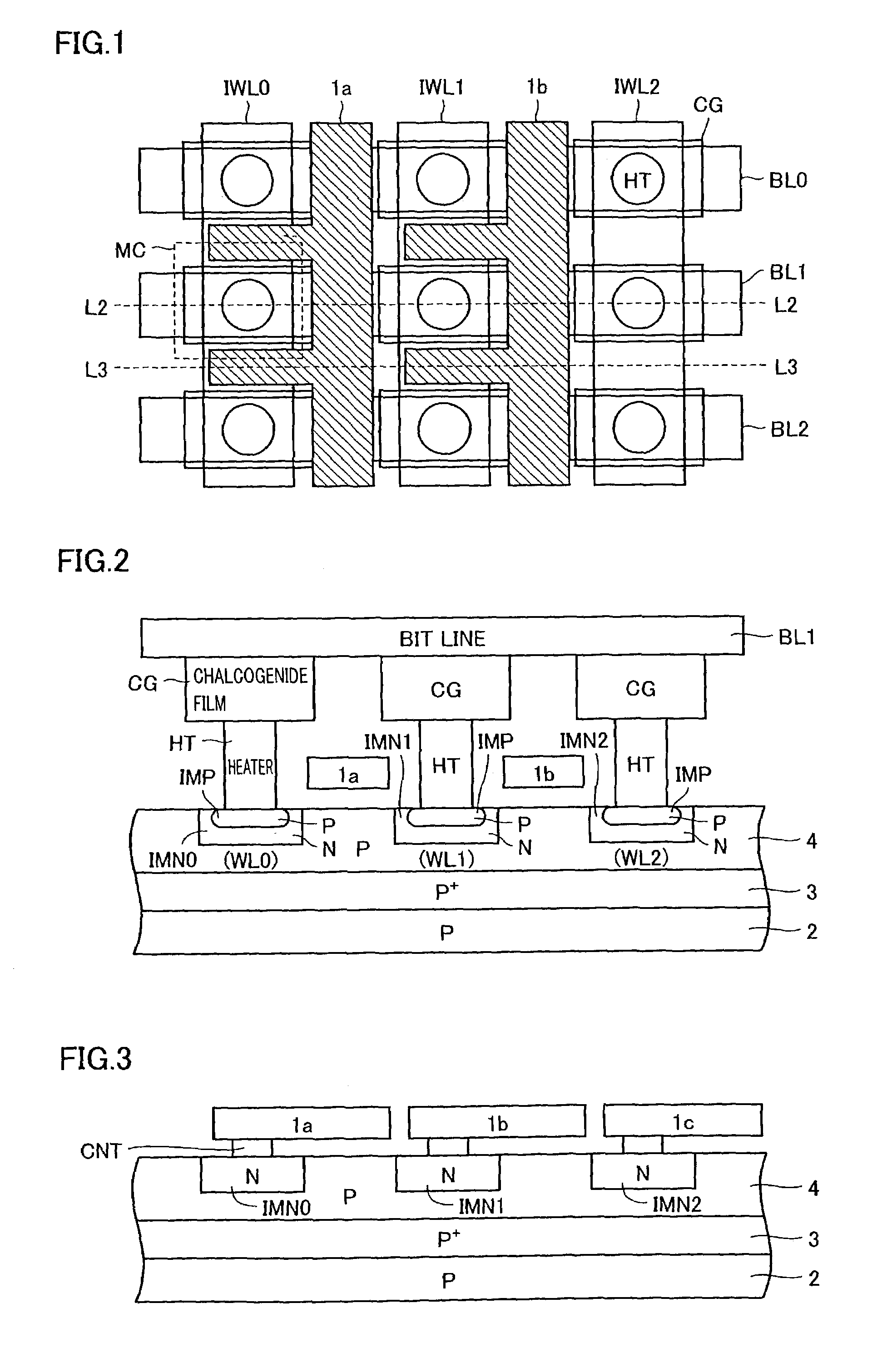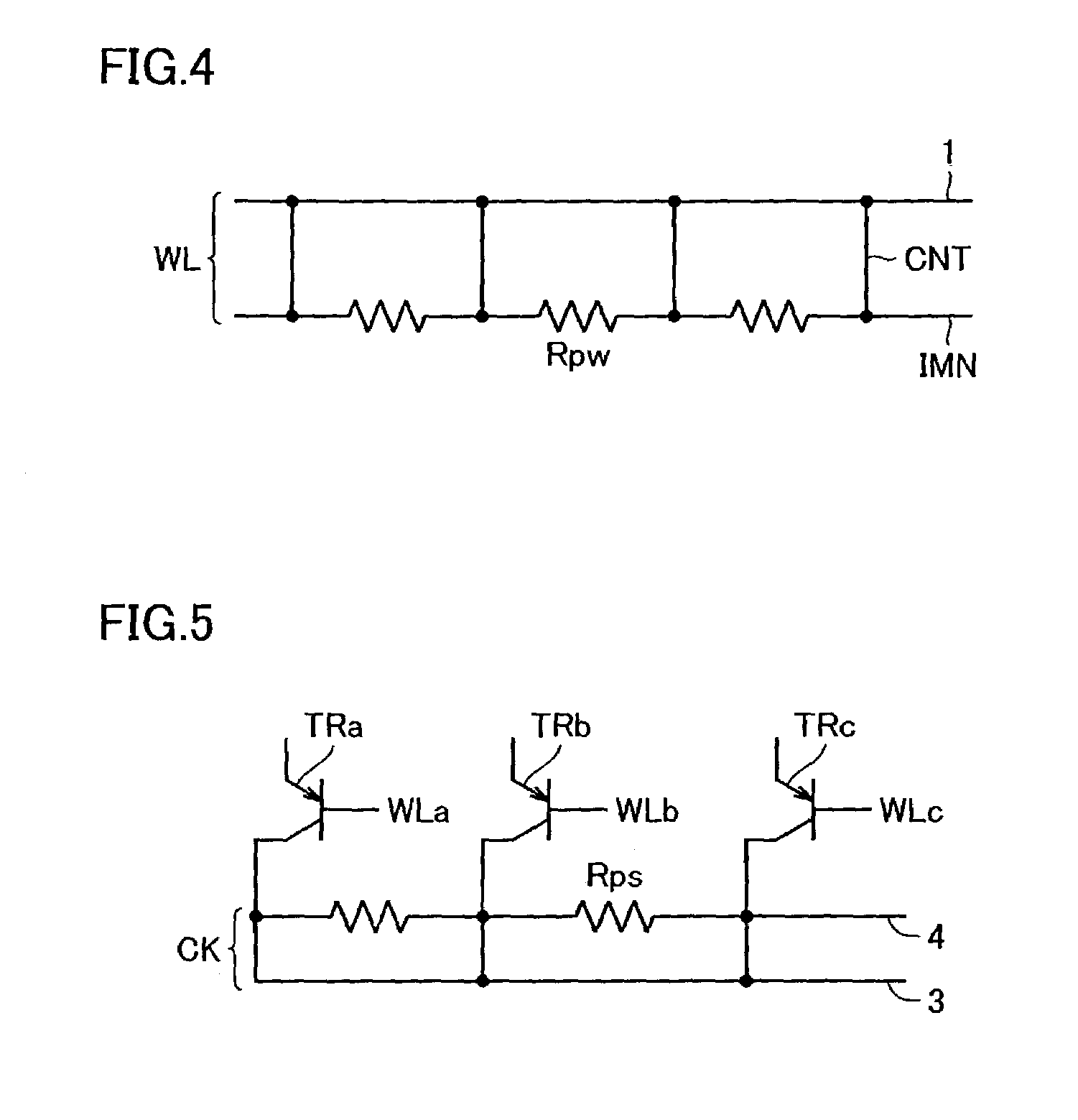Non-volatile semiconductor memory device allowing shrinking of memory cell
a semiconductor memory and non-volatile technology, applied in the direction of bulk negative resistance effect devices, instruments, basic electric elements, etc., can solve the problems of inability to accurately perform data writing and reading, inability to write and read data correctly, and longer access time, so as to reduce the size of the memory cell
- Summary
- Abstract
- Description
- Claims
- Application Information
AI Technical Summary
Benefits of technology
Problems solved by technology
Method used
Image
Examples
first embodiment
[0101
[0102]FIG. 1 schematically shows the layout of the memory array of a non-volatile semiconductor memory device according to a first embodiment of the present invention. FIG. 1 shows the layout of memory cells MC arranged in three rows and three columns. Referring to FIG. 1, word lines WL0–WL2 are provided corresponding to the respective rows of memory cells MC, and bit lines BL0–BL2 are disposed corresponding to the respective columns of memory cells MC, as in the conventional example. Word lines WL0–WL2 are each formed of an impurity layer located at the surface of a semiconductor substrate. Word lines WL0–WL2 each extend continuously in the row direction.
[0103]Memory cell MC includes a chalcogenide film CG of a rectangular feature coupled to bit line BL (indicating generically BL0–BL2), a heater HT for heating chalcogenide film CG, and a transistor element formed between this heater and a substrate region not shown. In FIG. 1, the transistor element included in memory cell MC ...
second embodiment
[0141
[0142]FIG. 8 schematically shows an arrangement of the array of a non-volatile semiconductor memory device according to a second embodiment of the present invention. FIG. 8 shows memory cells MC arranged in three columns and three rows representatively, either. N type impurity layers 30a–30c functioning as word lines are formed corresponding to the respective rows of memory cells MC and extending continuously in the row direction. Conductive layers 32a–32c are formed extending continuously in the column direction so as to cross impurity layers 30a–30c, respectively. Conductive layers 32a–32c function as bit lines BL.
[0143]Memory cell MC includes a phase change element 33 with a chalcogenide film, and a heater element 34 with a heater that heats the chalcogenide film of phase change element 33. In each memory cell MC, phase change element 33 has a width in a row direction substantially identical to that of conductive layers (bit line conductive layer) 32a–32c that function as bi...
third embodiment
[0199
[0200]FIG. 19 schematically shows an entire construction of a non-volatile semiconductor memory device according to a third embodiment of the present invention. Referring to FIG. 19, the non-volatile semiconductor memory device includes a memory cell array 100 having memory cells MC arranged in rows and columns. Memory cell MC includes a variable resistance element with a phase change element, and a select transistor for selecting this variable resistance element.
[0201]In memory cell array 100, a word line WL is disposed corresponding to a row of memory cells MC. Corresponding to each column of memory cells MC, a bit line BL is disposed. Moreover, dummy cells DMCa and DMCb are arranged in alignment with each row of memory cells MC. A dummy cell DMCa is connected to a dummy bit line DBLa, and a dummy cell DMCb is connected to a dummy bit line DBLb. Memory cell MC and dummy cells DMCa and DMCb are connected to one word line WL. Dummy cells DMCa and DMCb store data complementary t...
PUM
 Login to View More
Login to View More Abstract
Description
Claims
Application Information
 Login to View More
Login to View More - R&D
- Intellectual Property
- Life Sciences
- Materials
- Tech Scout
- Unparalleled Data Quality
- Higher Quality Content
- 60% Fewer Hallucinations
Browse by: Latest US Patents, China's latest patents, Technical Efficacy Thesaurus, Application Domain, Technology Topic, Popular Technical Reports.
© 2025 PatSnap. All rights reserved.Legal|Privacy policy|Modern Slavery Act Transparency Statement|Sitemap|About US| Contact US: help@patsnap.com



